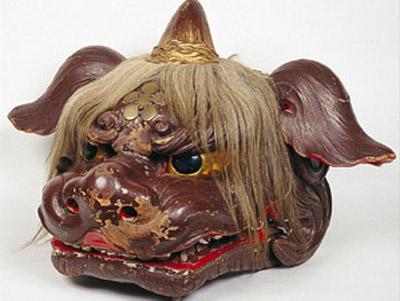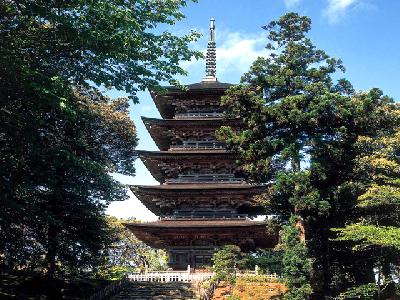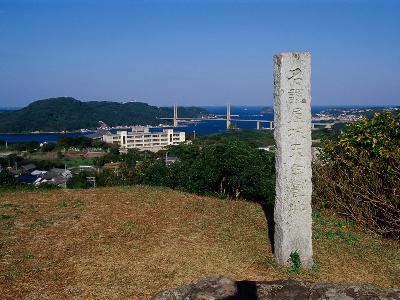Myojoji Temple is the head temple of Nichiren Shu in Hokuriku Region. It is located in Takidani-cho, Hakui City, Ishikawa Pref. The temple was established by Nissho Shonin and Nichijo Shonin in 1293 by the last order of Nichiren Shonin. According to the legend, Nissho stack a cane made of Enju (pagoda tree) into the ground and said to Nichijo, “If a root grows out of this cane, you must build a temple at this place.” After Nissho left for Kyoto, a root grew out of the cane and Nichijo built a temple. Nichijo dedicated the honor of the founder to Nissho and placed himself as the secondary founder. In 1574, when Toshiie Maeda, the lord of Kaga Province, dropped in at this temple while he was making an inspection tour in his domain, he was moved by this episode and designated this temple as his place of prayer for fortune of war and safety of his domain. The third generation of Kaga clan, Toshitsune, whose mother was one of Toshiie’s concubines and was an enthusiastic believer of Hokke-kyo (Buddhist mantra), dedicated the main hall. The whole complex had been completed in 70 years after that.
















